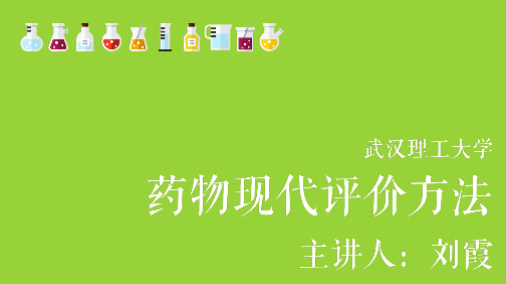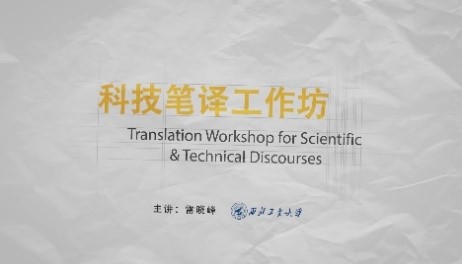
当前课程知识点:Science-based Food Safety Supervision > Chapter 16 New Challenges and Strategies > Discussion questions- new challenges for food safety supervision > Chapter 5 Zoonoses By Dr. Nimal Pathiraja
返回《Science-based Food Safety Supervision》慕课在线视频课程列表
Chapter 5 Zoonoses by Nimal
Welcome to this lecture, this lecture is on “Hazards from zoonoses and veterinary drugs”.
What we are going to do is we are going to look at what are zoonoses, zoonoses and food safety, and how to reduce the risks from food-borne zoonoes. That’s what we are going to do. And what’s finally we are going to do, why national and international organizations put so much effort to control zoonotic diseases.
So what is zoonosis? The definition of zoonoses is that diseases that can be transmitted between animals and humans, such as bird flu and tuberculosis. It can affect the health of both organisms - animals as well as humans. Now the researchers have found out 13 so-called zoonoses are responsible for 2.2 million human deaths every year. In other word, 2.2 million people die simply because they are infected with diseases which are coming from animals. The studies have shown there are certain zoonoses hotspots in the world. In the world, there are certain places people are very likely to get diseases from animals.
Vast majority of these illnesses and deaths occur in low-and middle-income countries. Targeting the diseases in the hardest-hit countries is crucial to protect global health – this is of globalization of food trade. And also to reducing severe levels of poverty and illness among the world's 1 billion poor livestock keepers. Concentrate on emerging diseases like bird flu and so on.
Let’s look at few facts before about 60 percent of all human diseases and 75 percent of all emerging infectious diseases are zoonotic. Most human infections with zoonoses come from livestock including pigs, chickens, cattle, goats, sheep and camels. Many of them come to us via food. That’s why we are interested when it comes to food safety. Out of 56 zoonotic diseases the researchers found 13 that were most important in terms of their impact on human heaths.
Many zoonotic diseases are foodborne we have already said, some of them are bacteria, Salmonella and Campylobacter are two very good examples. Some of them are virus; bird flu is a very good example. Some of them are parasites, Trichinellosis, coming from pigs, Anasakis coming from fish and Echinococosis, coming from pigs and also cattle is another important parasite and also finally, prions. Prions are small pieces of DNA which can cause mad cow diseases in cattle and human form is known as – Creutzfeldt–Jakob disease (CJD) which is as well-known as new variant CJD disease.
E. coli is another important disease. E. coli is responsible for numerous human diseases in food poisoning and many of those are Shiga toxin producing one which is very virulent. And E. coli bacteria particularly E. coli O157:H7 type is well known and it can cause even fatality in human and Shiga toxin E. coli (STEC) other E. coli approximately that are 100,000 of illnesses and many hospitalizations, and many deaths in USA and many other countries. Many food sources are responsible for this one E. coli. Meat is a very common source.
The next most common problem with microbiological disease is Campylobacter, Campylobacter jejuni like E. coli. The main source is poultry. This is a very serious problem in many countries in European Union and some south of these station countries and also in New Zealand. Most people who become ill with campylobacteriosis get diarrhea, cramping, abdominal pain, but it’s self-limiting disease but however certain people can get very serious problem.
So the causative agent of Salmonella that is different of types of Salmonella. Salmonella can cause very serious diseases. Most of them are coming from eggs and various other meat types. Salmonella bacteria can live in the intestines of both cold blooded and warm blooded animals. And we can get it from many things including contaminated soil and water and so on plus many other things that we eat. In other words, eggs, meat, and egg products and so on. So we are not going to go too much into detail but there are many serotypes of Salmonella. Salmonella typhimurium and Salmonella enteritidis which can cause us diseases. And some of the certain serotypes like S. javiana and so on are coming from certain food items and they are common in certain countries like in USA so on.
Most Salmonella infections are caused by contaminated food, especially like eggs, poultry and pig meat and ground beef. Salmonella contamination occurs in a worldwide many animal product that are serious problem with this one. Other food sources of Salmonella may include raw milk or other dairy products and pork. Salmonella outbreaks also have been traced to contaminated vegetables, fruits, and even other green vegetables and including marijuana. It can come from various sources, including bivalves and so on.
In a US study have shown among single foods implicated in eggs. Eggs are the most important component in Salmonella poisoning. Human cases of Salmonella are typically acquired through the consumption of Salmonella-contaminated food. Food is the most common vehicle for the spread of Salmonella, and eggs are implicated all over the world. Salmonella can be found not only inside the eggs, it can be found also outside them.
While Salmonella comes from animal feces, fruits and vegetables can become contaminated while they are being processed wash and so on. One of the example is raw sprouts, can get contaminated. The U.S. Department of Health and Human Services they have reported many of these cases including Salmonella, Campylobacter and so on.
Now one problem that we have seen the world is that today Salmonella can come to us from many other things like cantaloupe melon, peppers, herbs, green onions, fruits, including mangos. So how do they get into this product is by contaminated water?
Some serotypes of Salmonella have become resistant to antibiotics and antibiotic-resistant Salmonella food poisoning has killed many people simply because they are not responding to antibiotic treatment. Antibiotic-resistant Salmonella have been isolated from various food products, and have been the causative agent in several food borne disease outbreaks in many countries.
The economic impact of these diseases is very severe. For example, the US data showed that the cost-estimates for four pathogens (Campylobacter, Salmonella, E. coli O157:H7, and Listeria monocytogenes) are billions of US dollars. Not only the money is going for the treatment of people, the number of days people are not coming to work, number of man were lost.
There are many steps that we can take to prevent Salmonellosis. In general, safe cooking, preparation is most important thing. Additionally, safe choices at the grocery store can also help us to do that. Now for example, if we want to eat eggs without Salmonella, of cause we can buy pasteurization eggs. Pasteurization egg is at the same time very expensive. So there are for some of the control measures but they are very expensive.
Let’s look at few viruses. Avian flu is a RNA virus it can cause very severe problem and many people have died of Avian flu particularly in south Indonesia. It can come from wild fowl as well as the domestic animals. That is a severe problem because most of these viruses are resistant to the environment. Therefore, control of viruses via vaccination of chicken is one of the most important things. Live birds, meat and eggs are sources of infection.
So how can we control it? The most important thing and easiest way to control is to cook your food. But there are certain instances that you cannot cook your food. Certain food stuff sugar contain rollers, mayonnaise are good examples. So in such situation what can you do?We have to pasteurize them in all. So the control is in there, but those controls are not always applicable in all situations.
Now the one of the question that we asking is that can anyone get bird flu by eating poultry or eggs from sick birds? Answer is no, people cannot get bird flu from properly cooked poultry or eggs, even if the products came from sick birds. That’s an important to understand. If you cook them properly, nothing can happen to us. There is no evidence anyone has been infected with bird flu by eating thoroughly cooked eggs or poultry.
So how can we control it? You can get bird flu by eating raw or undercooked egg products? Yes, if the bird flu is infected. But if you cook them, you can’t get it. Since the bird flu virus can survive on eggshells and inside eggs, if you have a supply of eggs from your own birds, never eat them raw or undercooked.
So what are the controls? Strict bio-security, vaccination of birds and quarantine of imported birds from other countries.
Now the vaccination is practicing in some countries, like in south Indonesia but it’s not practicing in European Union for various reasons.
Integrated production systems, in other words, integration with fish farming, pigs farming, poultry farming is a good thing. But in the same time, it can cause a lot of problems. Particularly in south Indonesia, as you know that we are very close to animals. You can see this picture, how close we are to animals. This is a market in Vietnam, because in Vietnam and other countries, in this part they like to buy live animals.
One other virus that we are worried about in terms of food safety is norovirus. Norovirus, commonly known as the winter vomiting bug, it can come to us from bivalves in other words the oysters and the things like that. This can be a severe source. The only way that we can control it is we have to control where we produce these bivalves. Most of the places where the bivalves are produced they are heavily contaminated, then they get norovirus, and the norovirus can come to us.
For example, it can come to us from fresh produce, shellfish, ready-to-eat food and various other things. And human to human contact is also important. These are some photographs of the bivalves that we eat.
One other thing we want to touch very briefly is veterinary drugs as a hazard in food. As you know, when the animals are sick, we have to treat the animals with veterinary drugs. At the same time, sometime we add veterinary drugs into feed of animals to improve their growth. Sometime we inject them into animals to improve the growth. For example the injection of recombinant bovine somatotropin into cattle to improve the growth in United States is a common practice. But that’s not allowed in many parts of the world. Including the European Union and in south Indonesia. So what it means the intensive production systems we use lots of veterinary drugs? These veterinary drugs if we don’t use them properly, they can come to us through our food.
So how can we control it? The only way that we can control it that we have the Maximum Residue Level for all these veterinary drugs in different component. MRLs are given for all veterinary drugs in commodity combinations. But for us to do that we must control them. There are standards within countries as well as there are international standards given by CODEX Alimentarius.
However, some veterinary drugs should not be used on food animals, in other word; they are banned to be used on food animals. There are many examples for that, malachite green are one of the drugs which are used in fish. If you use them in fishing, definitely they will come to us through fish. But it is a prohibited drug therefore, it should not be use and there are no MRIs, maximum residue level.
Another issue is the control of use of antibiotics in animals can lead to antibiotic resistant. There are many cases of Salmonella and Campylobacter food poisoning but they cannot be treated because many of them have developed antibiotic resistance. Already there are many such organisms that can cause serious food poisoning. So veterinary drugs have two issues, one thing is that it can cause antibiotic resistance; second thing is that it can come to us through our food, and it should be controlled using maximum residue level. But we also must realize that certain veterinary drugs should not be used in food animals.
Thank you very much.
返回《Science-based Food Safety Supervision》慕课在线视频列表
-Chapter 1 Course Introduction by Dr Tang
-Discussion questions-case study
-Chapter 2 Food and Food Requirements by Dr. Tang
-Multiple choice questions- choose one from four to five
-Chapter 3 Food Safety and Food Defense by Dr. Tang
-Multiple choice questions- choose one from four to five
-Chapter 4 Hazards from Emerging Pathogens By Dr. Nimal Pathiraja
-Multiple choice questions -choose one from four to six
-Chapter 5 Zoonoses By Dr. Nimal Pathiraja
-Topic discussion-zoonose and animal drug residues
-Chapter 6 Pesticides and Residues by Dr. William Riley
-True or false questions
-Chapter 7 Mycotoxins by Dr. William Riley
-True or false questions
-Chapter 8 Biofilm and Food Safety by Dr. Tang
-Multiple choice questions-choose one from four to six
-Chapter 9 Processing -Induced Hazard-Acrylmide by Dr. Tang
-True or false questions
-Chapter 10 Oxidative Hazards- MDA by Dr. Tang
-Topic discussion-oxidative hazards in meat products
-Chapter 11 Traditional Detection Methods for Food Safety by Dr. Jerry Teng
-Multiple choice questions -choose one from four
-Chapter 12 Contemporary Detection Method-Biosensor for Food Safety by Dr. Jerry Teng
-True or false questions
-Chapter 13 FATTOM and Hurdle Technology for Food Safety Control by Dr. Tang
-Multiple choice questions-choose one from four to five
-Chapter 14 Food Poisoning and Emergency Response by Dr. Nimal Pathiraja
-Multiple choice questions-choose one from four to six
-Chapter 15 Food Safety Traceability by Dr. Nimal Pathiraja
-Multiple choice questions-choose one from four to five.
-Chapter 16 New Challenges for Food Safety by Dr. Tang
-Discussion questions- new challenges for food safety supervision


